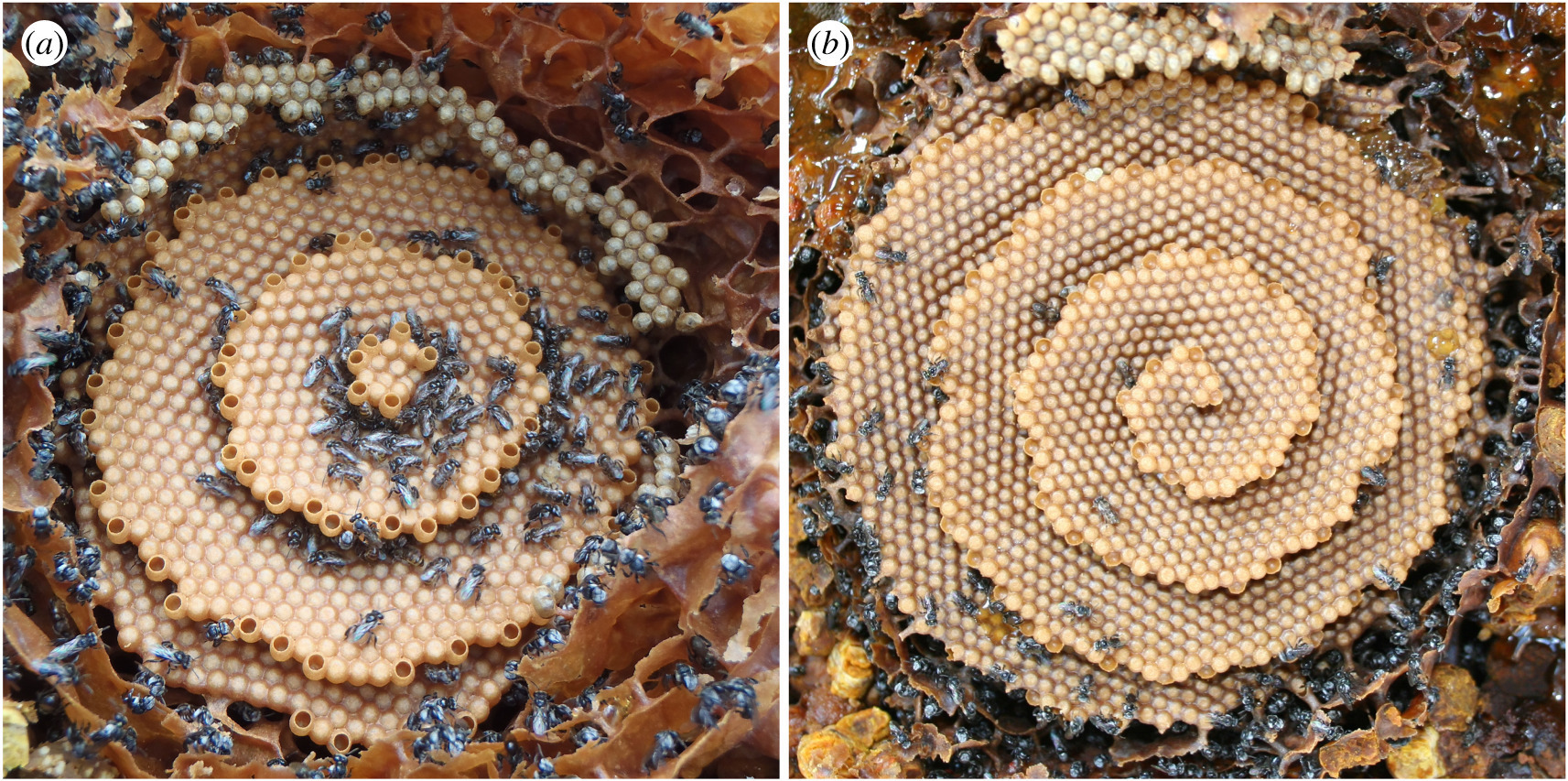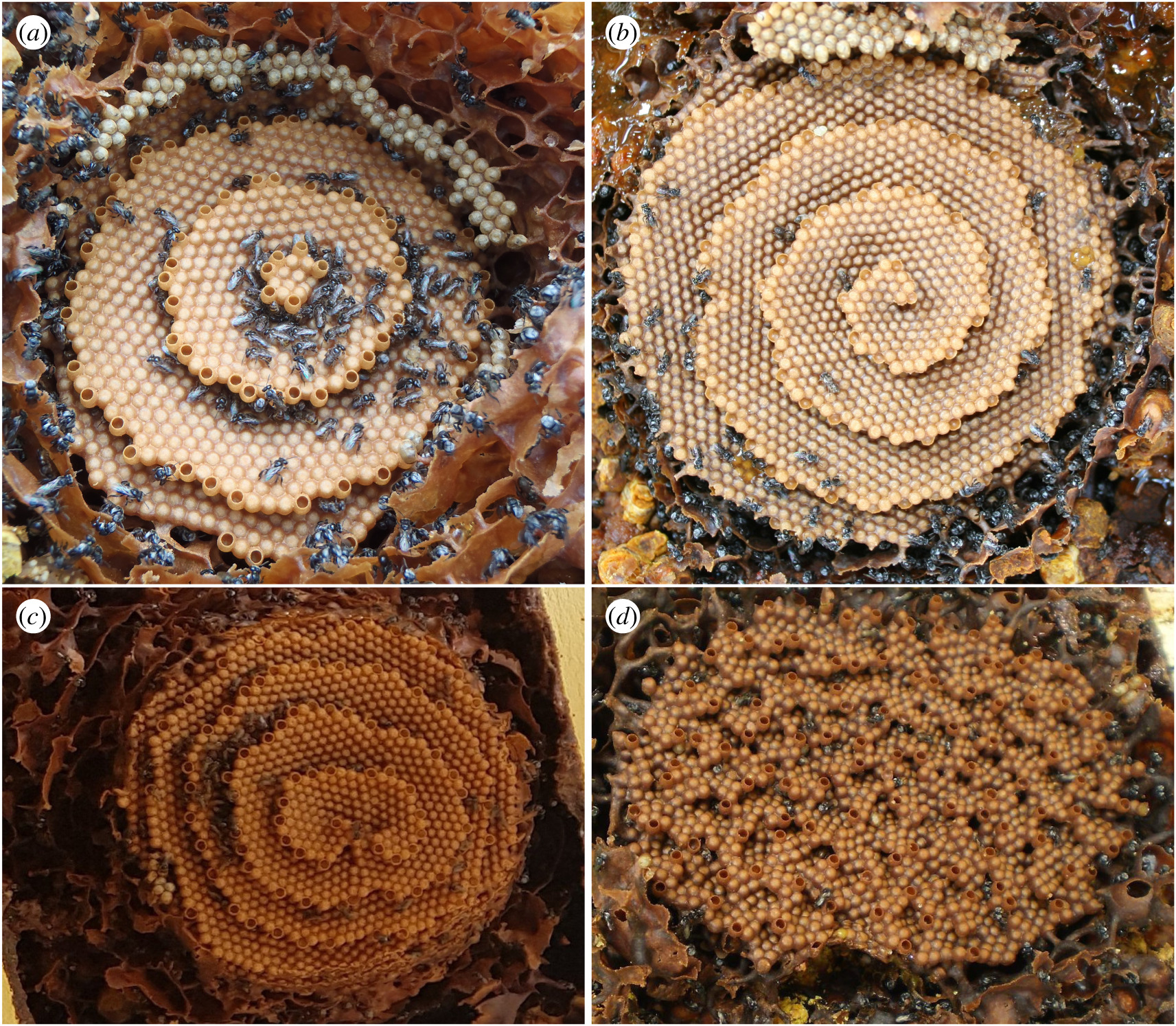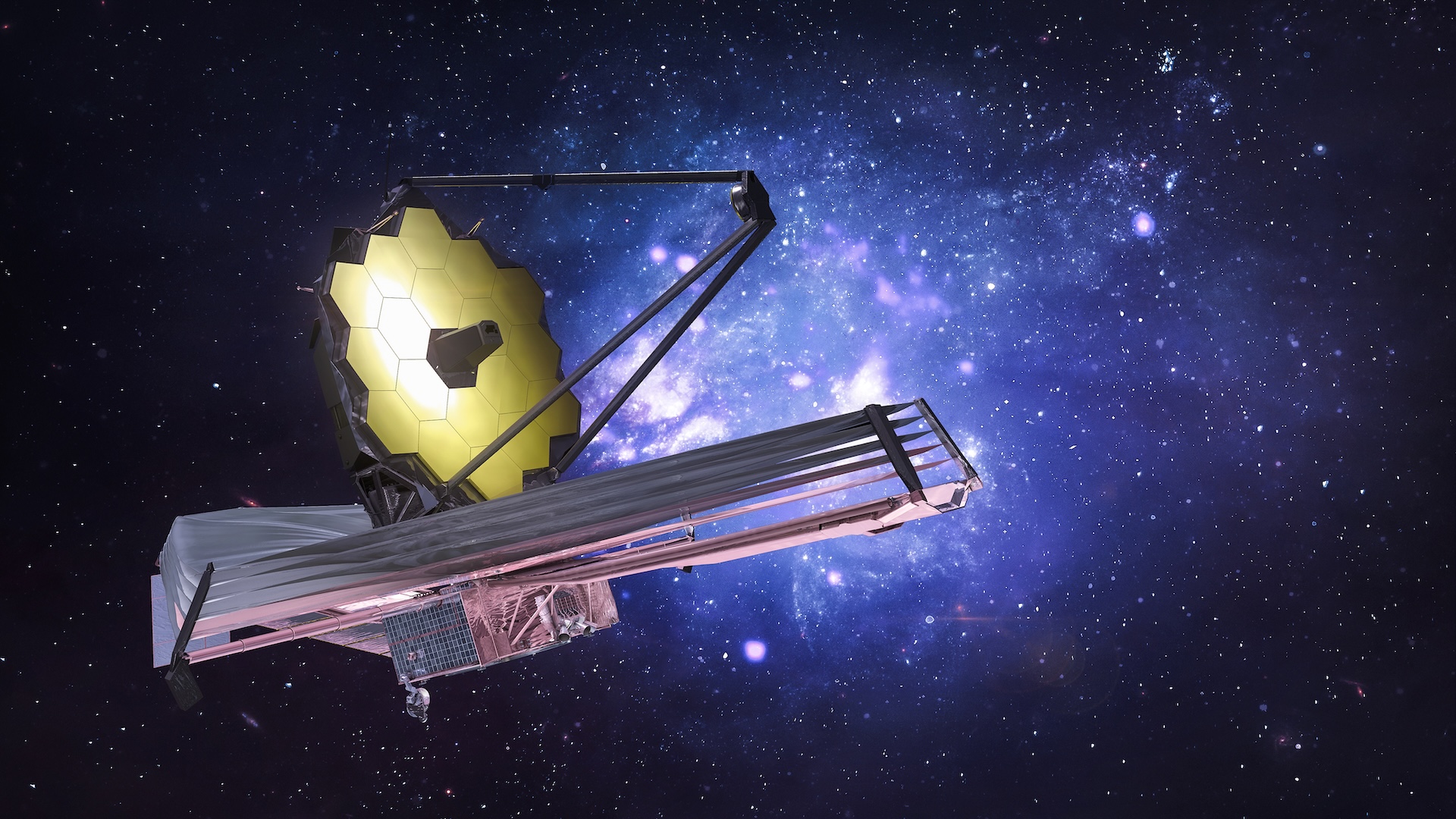Strange, spiral bee combs look like fantastical crystal palaces. Now we know why.
These Australian bees might be following the same rules that crystals use to grow.

In a world of bland hexagonal honeycombs, a small group of rebellious Australian bees has chosen to build spiral staircases.
Meet the bees of the genus Tetragonula. These Aussie pollinators have no stingers, but make up for their defensive deficiencies by building mesmerizing fortresses of wax whose beauty has long captivated the Internet.
These spiral structures are actually giant, swirly nests called "brood combs." Each little circular cell is an egg chamber, built by a wax-secreting worker bee, provisioned with regurgitated food by a nurse bee, then filled with an egg by the queen herself. When one cell is done, workers move on to the next one, building outward and upward in a spiral pattern that can sometimes reach 20 stories tall, Tim Heard, an entomologist with The Commonwealth Scientific and Industrial Research Organization (CSIRO) in Australia, previously told Live Science.
Related: Googly eyes: See photos of striking wasp faces
So, how did the Tetragonula bees become the Frank Lloyd Wrights of the insect world? Does each colony employ its own master architect, charged with guiding his comb's construction — or does each worker bee merely follow an unconscious set of individually-encoded building rules? According to a study published today (July 22) in the Journal of the Royal Society Interface, the answer could lie in crystals.
"These combs follow the same basic rules that cause crystals to grow up in a spiral pattern," study co-author Julyan Cartwright, a researcher at the Spanish National Research Council (CSIC) who studies mathematical patterns in nature, told Live Science. "Each bee is basically following an algorithm."
Buzzed on nature
Cartwright saw a viral image of the infamous brood combs a few years ago and immediately recognized the pattern; at the time, he was studying mother-of-pearl mollusks, whose iridescent shells also reveal distinct spiral structures when seen under an electron microscope.
Get the world’s most fascinating discoveries delivered straight to your inbox.
Both cases of animal architecture recalled research from the 1950s that explained how crystals naturally grow in a spiral structure by following a few simple, mathematical rules, Cartwright said. He and his colleagues wanted to find out what those rules might be for the Tetragonula bees.
"What sort of minimal information would a bee have that would lead it to produce these patterns?" Cartwright said.

To investigate, the researchers modeled the construction of a spiral comb using an algorithm inspired by crystal growth. Each simulation started with a single brood cell. One by one, digital worker bees added new cells to the comb by following one of two simple rules: Bees could add a cell to the growth front — the edge of the comb where other bees had been laying cells — so long as their new cell was placed slightly higher than its neighbors; or, bees could build a new cell on top of an existing cell, so long as that cell was more or less level with its neighboring cells.
With these restrictions in place, each new level of the comb had to be built a good distance away from the edge, giving each new level a smaller radius than the last. The higher a level, the smaller its radius. And so, with just these few simple rules, the spiral pattern emerged.
According to Cartwright, the ease with which his computer was able to recreate Tetragonula's spiral combs shows that the bees aren't following a master plan — rather, they are merely responding to their local environment according to a few biological rules coded into their behavior long ago.
"When humans build a structure like a building, we have an architect who makes a plan and then the builders follow it," Cartwright said. "What we found is that the bees don't need a plan. They just come with a set of simple rules as to where one should put a new piece of wax when it arrives at the comb. And if you program those rules into a computer, they produce the same pictures."
What are those rules, exactly? Until we can ask the bees personally, there's probably no way we can know for sure, the researchers wrote. Good thing they're stingless.
Originally published on Live Science.

Brandon is the space / physics editor at Live Science. With more than 20 years of editorial experience, his writing has appeared in The Washington Post, Reader's Digest, CBS.com, the Richard Dawkins Foundation website and other outlets. He holds a bachelor's degree in creative writing from the University of Arizona, with minors in journalism and media arts. His interests include black holes, asteroids and comets, and the search for extraterrestrial life.


